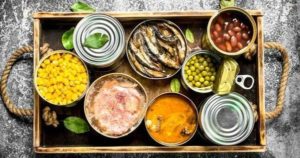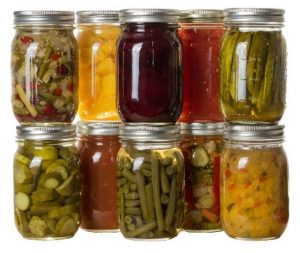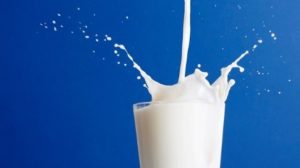Do you know the different techniques of food preservation?

A little history on food preservation techniques 🔎
Do you know why the treatment of food by different processes has always played an essential role in the history of human nutrition ?
Initially hunter-gatherers, man was nomadic and had to continually move around to find the food he needed to eat. Later, he developed agriculture and animal husbandry, which allowed him to become sedentary. The absence of certain resources during the year, depending on the season, forced him to develop conservation techniques in order to feed himself longer from his crops.
Some of these techniques are still in use today, while other more modern techniques have been developed as technology and science have progressed. They allow today to ensure the preservation of the gustative and nutritive properties of food and to prevent the development of microorganisms, bacteria and fungi, possibly responsible for food poisoning.🦠

Why is food perishable?
All food, whether of plant or animal origin, contains micro-organisms, some of which are good and others bad for humans. Depending on the conditions in which the food is placed (temperature, humidity, oxygen, pH, etc.), these microorganisms will develop more or less quickly and alter the food, even make it pathogenic. In parallel, oxidative and enzymatic reactions will also play a role in this food alteration.
What are the techniques of food preservation?
Preservation by cold:
Depending on the climate of the regions, freezing was a technique used mainly by groups living near glaciers or frozen water in winter. Today, these techniques still exist: we find refrigeration (between 0°C and 4°C), freezing and deep-freezing (at -18°C).

Preservation by heat :
Pasteurization: This technique aims to subject the bacteria to a temperature lower than 100°C. Part of the microbial flora is destroyed. However the most resistant forms persist at these temperatures, it is thus necessary to supplement this treatment by the conservation with cold for the products having a pH higher or equal to 4,5 and at room temperature for a more acid pH and lower than 4,5. From this process, a “Use By” date is defined. Beyond this date, the products can be altered from the microbiological and gustatory points of view.

Sterilization: The treatment, in this case, is carried out at a temperature higher than 100°C. It aims to destroy all microbial forms, including the most resistant spore-forming forms. For these products, a Date of Minimum Durability (DDM) is applied. They are then stored at room temperature. After this date, the products will lose their taste and nutritional qualities but will not be pathogenic.
Ultra High Temperature (UHT) treatment: this method allows sensitive liquid foods, such as milk, to be treated at temperatures above 135°C in a few seconds. They are then immediately and quickly cooled. This technique then involves aseptic packaging to allow long conservation at room temperature. Moreover, this technique does not alter the color or the taste of the products.

Preservation by separation and elimination of water:
Dehydration and drying: This ancestral technique consists in eliminating water by the heat of the sun or of an oven. Without water, micro-organisms cannot develop, which avoids the reactions of alteration of the products.
Smoking: It is the action of drying, followed by smoking which allows the preservation of products, especially for meat or fish. Smoking allows both to preserve the products thanks to the aseptic power of certain components but also to flavour and colour them.
Lyophilization: The action of several processes allows the elimination of water. The products are first frozen and then placed under vacuum. The water then passes from the solid state to the vapor state. This allows to keep the shape and all the gustative and nutritive properties of the food.
Other methods have appeared with the evolution of technologies
Other techniques have appeared, for example:
Vacuum packaging:The aim is to reduce as much as possible the oxygen inside the packaging in order to prevent the action of oxygen on the product and the proliferation of micro-organisms.
Modified atmosphere packaging: The air surrounding the product is replaced by a gas or a mixture of inert gases, during the packaging of the product. This technique must be associated with a cool storage.
High Pressure Processing (HPP) or Pascalisation:This technique is recent and expensive, effective for heat-sensitive foods. It consists in subjecting the already packed products to a high pressure which can go up to 9000 bars. For a few minutes. The high-pressure acts on the structure of certain molecules which prevents enzymatic and microbial reactions from taking place. The products can then be preserved for a few weeks to a few months.

What is Steritech’s role in the world of food preservation?
For more than 30 years Steritech has been committed to providing food and pharmaceutical companies with intelligent pasteurization and sterilization solutions that are tailored to the products. The industrial autoclaves and continuous systems we offer are part of these solutions. An optimal treatment of the products is obtained thanks to the right balance between temperature, time and pressure, depending on the type of product, its packaging and its sensitivity.
Contact us to find out which food preservation technique is the most suitable for your products..